Digital Poster
Doing More with RF Pulses: PTx & Multiband
ISMRM & ISMRT Annual Meeting & Exhibition • 10-15 May 2025 • Honolulu, Hawai'i

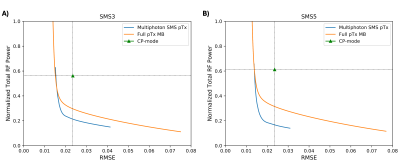 |
Computer Number: 97
3438. Multiphoton
Excitation Enabled Simultaneous Multislice Parallel Transmission
at 7T

T. D. Ipek, V. Han, P. Krahn, C. Liu
University of California, Berkeley, Berkeley, United States
Impact: This work demonstrates the effectiveness of
combining Multiphoton SMS with pTx, achieving comparable
homogeneity to Full pTx MB while reducing RF power
requirements. Multiphoton SMS pTx provides a promising
approach for more efficient and safer SMS excitation at
ultrahigh fields.
|
|
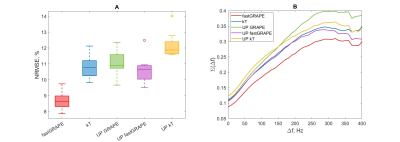 |
Computer Number: 98
3439. Fast
Gradient Ascent Pulse Engineering for parallel transmission
pulse design in the small and large tip angle regimes
N. Dudysheva, J. Brégeat, F. Mauconduit, A. Massire, N.
Boulant, V. Gras
Université Paris-Saclay, CEA, NeuroSpin, CNRS, BAOBAB, Gif sur Yvette, France
Impact: With a flip angle accuracy comparable to GRAPE
and a computation time comparable to kT-points, fastGRAPE
presents a promising strategy both for online and offline
dynamic RF shimming.
|
|
 |
Computer Number: 99
3440. Evaluation
of the effects of motion on dynamic pTx pulse optimization at 7T
J. Philippe, N. Pato Montemayor, A. Klauser, E. Sleight, P.
A. Liebig, J. Herrler, R. M. Heidemann, T. Kober, J-P
Thiran, T. Hilbert, G. F. Piredda, T. Yu
Siemens Healthineers International AG, Lausanne, Switzerland
Impact: Fast online customized pTx pulses suffer from
motion during long scanning sessions, mainly due to changes
in B1+ field
distribution. However, for motion amplitudes comparable to
what was measured, the negative impact on low flip angle
non-selective pulses is negligible.
|
|
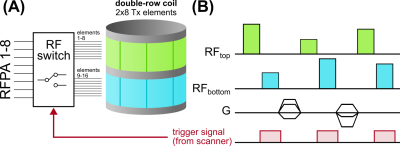 |
Computer Number: 100
3441. Switching
pTx: Time-Division Multiplexing for Improved kT Points
Excitation with a Limited Number of RF Power Amplifiers
F. Glang, G. Solomakha, D. Bosch, K. Scheffler, N. Avdievich
Max Planck Institute for Biological Cybernetics, Tübingen, Germany
Impact: Time-division multiplexing allows driving a
larger number of Tx elements with a smaller number of RFPAs,
resulting in improved pTx performance. This opens up new
possibilities for using advanced multi-row pTx coils in
sites with only 8 RFPAs available.
|
|
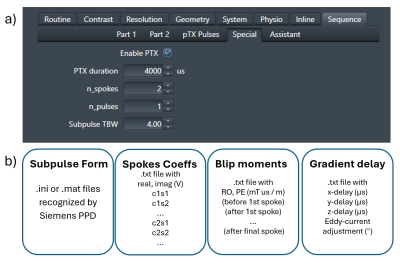 |
Computer Number: 101
3442. SBBMBSpokes:
Sequence building block for multiband spokes pTx pulses
M. Zhang, I. Dragonu, C. Rodgers
University of Cambridge, Cambridge, United Kingdom
Impact:
Our scanner software module greatly improves the pTx workflow in 2D imaging. The expanded functionality in multiband, integrated correction for system imperfection, and accelerated sequence preparation allow the use of spokes pTx pulses in routine research or clinical scans. |
|
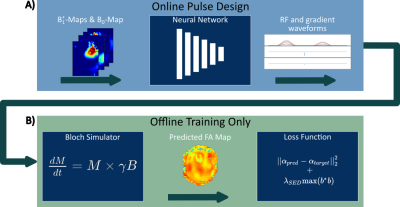 |
Computer Number: 102
3443. Quasi-instantaneous
subject-specific slice-by-slice pTx pulse design with Deep
Learning: application to 2D diffusion MRI
J. Bartlett, C. Davey, I. Tyshchenko, Y. Blunck, J. Duan, L.
Johnston, S. Lévy
University of Melbourne, Melbourne, Australia
Impact: The proposed deep learning method enables
subject and slice-specific pTx pulse design for 2D sequences
with a large number of slices in a practical time, providing
full brain coverage with improved homogeneity at 7T.
|
|
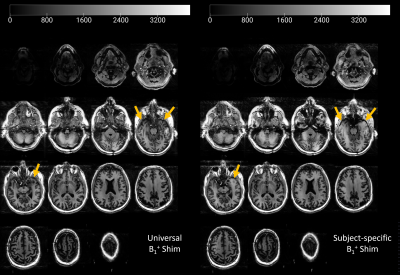 |
Computer Number: 103
3444. 10.5T
in-vivo head imaging with universal RF shimming
Y. W. Park, S. Schmidt, W. Bogner, G. Metzger, M. Marjańska
University of Minnesota, Minneapolis, United States
Impact: Simpler and faster acquisition of head
structural images at 10.5T using a universal RF shim.
|
|
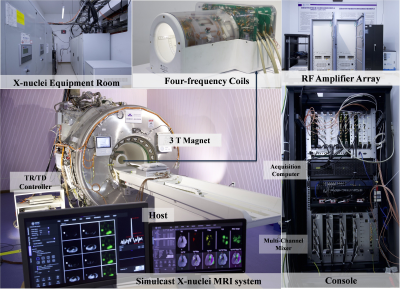 |
Computer Number: 104
3445. A
Scalable Simulcast X-nuclei MRI System for Concurrent
Multi-Frequency Transmit/Receive
C. Yang, C. Wu, Z. Zhang, N. Li, Z. Ding, L. Hu, J. Yuan, K.
Wang, X. Sun
NHC and CAMS Key Laboratory of Molecular Probe and Targeted Theranostics, Molecular Imaging Research Center (MIRC) of Harbin Medical University, Harbin, China
Impact: Simultaneous and rapidly interleaved acquisition
of signals from 1H/19F/23Na/31P
were achieved with our Simulcast X-nuclei MRI system, which
provides inspiring possibilities for in vivo simultaneously
characterizing lesion site structure, molecular targets, ion
perturbations and energy metabolism information.
|
|
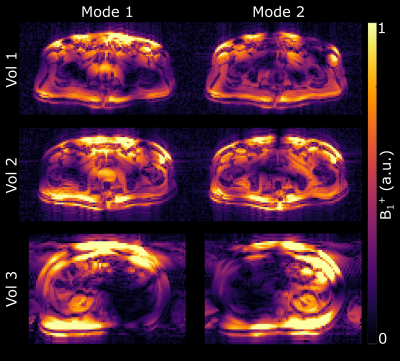 |
Computer Number: 105
3446. Accelerated
large FOV TSE body imaging at 7T using local contrast optimized
AMORE
T. Haluptzok, S. Schmidt, G. Metzger
University of Minnesota, Minneapolis, United States
Impact: A generalization of the AMORE method, AMORE-C,
is developed that enables TSE imaging using a TR half that
of standard TSE sequences. This method has minimal SAR
penalties and enables large FOV imaging in the body with
improved scanning efficiency.
|
|
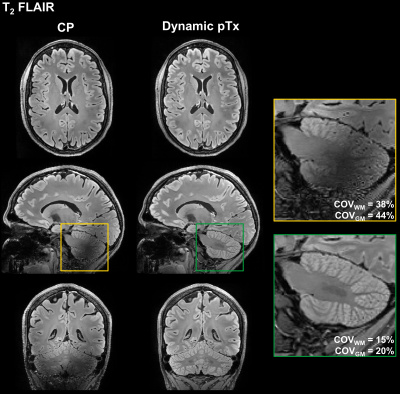 |
Computer Number: 106
3447. Individually
optimized dynamic parallel transmit pulses for 3D
high-resolution SPACE imaging at 7T
G. F. Piredda, E. Sleight, T. Yu, A. Klauser, N. Pato
Montemayor, J. Philippe, L. Bacha, T. Di Noto, B. Maréchal,
P. Liebig, D. Nickel, T. Kober, T. Hilbert, R. Heidemann, J.
Herrler
Siemens Healthineers International AG, Lausanne, Switzerland
Impact: Individually optimized dynamic parallel transmit
pulses for 3D high-resolution SPACE imaging at 7T achieve
clinically acceptable image homogeneity and acquisition
time, enabling the application of widely used clinical
contrasts at 7T.
|
|
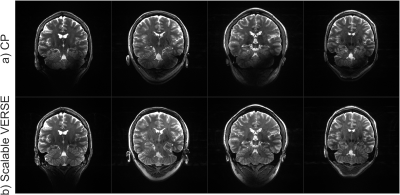 |
Computer Number: 107
3448. Scalable
spokes pTx pulses for 2D turbo-spin-echo imaging at 7T
M. Zhang, C. Rodgers
University of Cambridge, Cambridge, United Kingdom
Impact: Scalable spokes pTx pulses produce high quality
2D-TSE images. It mitigates signal dropouts and recover
diagnostic quality when single-transmit scans are
inadequate. This will be valuable for patients with
drug-resistant focal epilepsy to find epilepsy-causing
lesions in the temporal lobes.
|
|
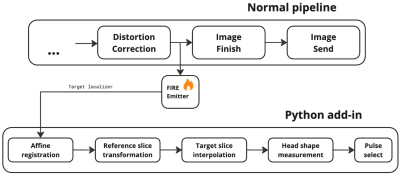 |
Computer Number: 108
3449. Subpopulation
universal pulses: practical online implementation
I. Tyshchenko, J. Bartlett, Y. Blunck, B. Tahayori, K. Chow,
P. Liebig, L. Johnston, S. Lévy
The University of Melbourne, Melbourne, Australia
Impact: The novel head clustering and pulse selection
pipeline enables subpopulation universal pulses in clinical
practice. It enables pulse selection for each head shape and
position without extending scan time, facilitating
personalized and efficient ultra-high field MRI.
|
|
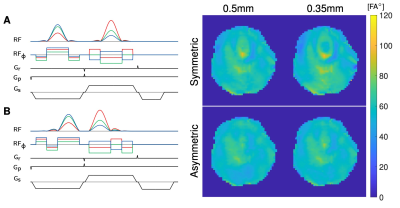 |
Computer Number: 109
3450. Improved
flip-angle uniformity in 0.35-mm slices using asymmetric pTx
spoke pulses
C-Y Wu, J. Polimeni, M. Cloos
University of Glasgow, Glasgow, United Kingdom
Impact: Parallel transmit is well known for efficient
radiofrequency pulse designs that produce uniform
excitations. We show that asymmetric spokes can mitigate
off-resonance effects and generate uniform excitation for
0.5-mm and 0.35-mm thick slices.
|
|
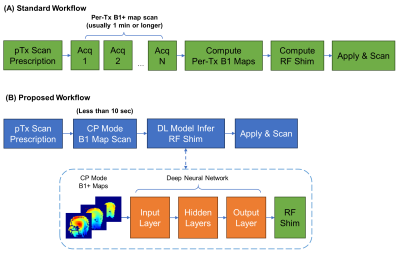 |
Computer Number: 110
3451. Deep
Learning Based Ultrafast and Robust RF Shimming Using Quadrature
B1+ Maps
X. He, B. Yang, X. Zhu, D. Shen, E. Printz, G. Wu, L. Sun,
R. Peters
GE HealthCare, Waukesha, United States
Impact: The deep learning based RF shimming may offer a
faster workflow for ultrahigh field imaging, greatly
reducing B1+ calibration scan time with less sensitivity to
motion and more consistent improvements in image quality.
|
|
 |
Computer Number: 111
3452. GRAPE-based
slab-selective universal parallel transmit excitation pulses for
whole-brain MRSI at 7 Tesla
Y. Völzke, D. Löwen, E. Pracht, A. Radbruch, B. Strasser, L.
Hingerl, G. Hangel, P. Lazen, W. Bogner, T. Stöcker
Department of Neuroradiology, University Clinic Bonn, Bonn, Germany
Impact: This work shows the feasibility of GRAPE-based
frequency-selective universal parallel transmit excitation
pulses for whole-brain MRSI. These reduce spatial flip angle
variations, and the resulting SNR loss, which is one of the
main difficulties in whole-brain MRSI at ultra-high field.
|
|
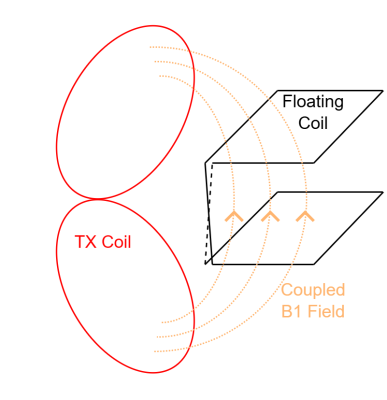 |
Computer Number: 112
3453. MRI
B1 Optimization using Coupled Coil Modal Analysis
V. Venkidu, M. Raja Viswanath, M. Shokrekhodaei, A.
Reykowski, S. King
Promaxo Inc., Oakland, United States
Impact: This adaptable analytical approach, employing a
secondary coil to enhance the TX coil’s B1 field
uniformity and localization, supports improved MRI imaging
quality and enables our one-sided MRI system to image deeper
into the body.
|
The International Society for Magnetic Resonance in Medicine is accredited by the Accreditation Council for Continuing Medical Education to provide continuing medical education for physicians.